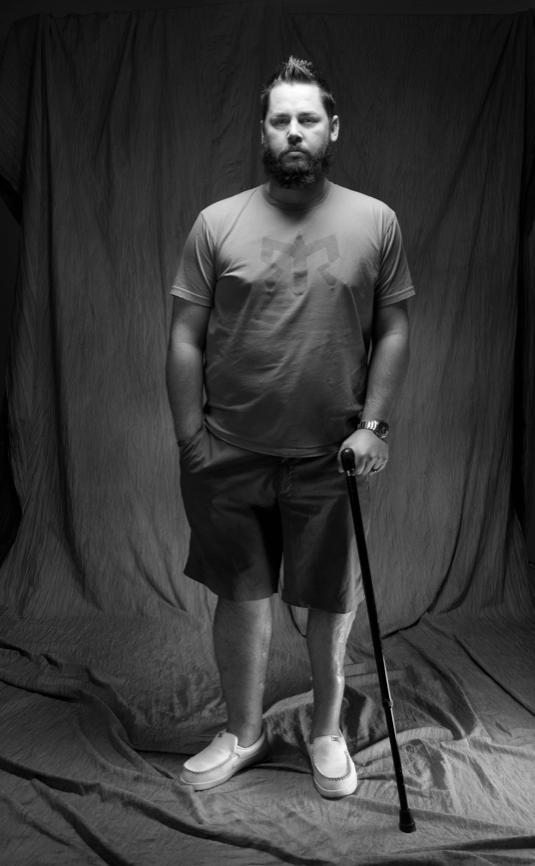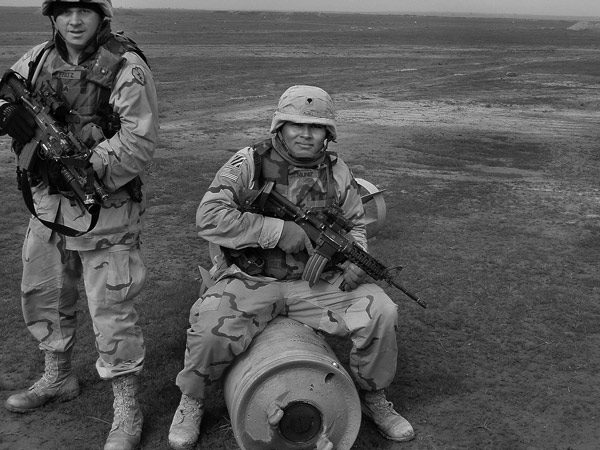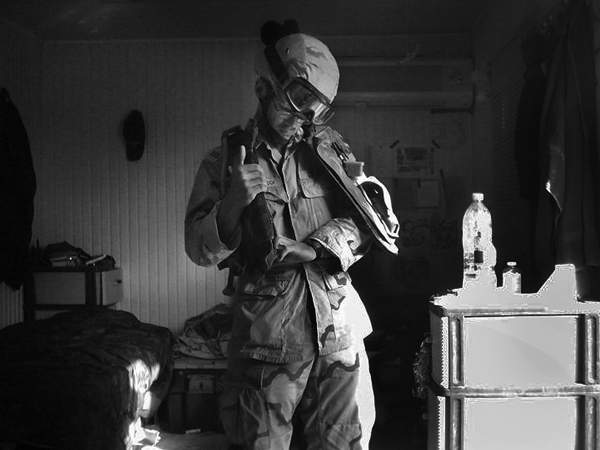Specialist Carlos Muniz sees everything from the gunner's perch of his Humvee, two trucks back.
A tremendous boom. A huge black cloud. A wave of dirt and metal and smoke. He cowers in the turret while hell passes over him.
As the dust settles, the driver of Muniz's truck, Chris Harry, creeps the Humvee forward. Two soldiers are lying in the dirt.
Muniz instantly knows who they are.
Jacobs, to the right, is on his back. Sergeant Chu is leaning over him, rolling out a tourniquet, covered in blood.
To the left, his long and slender frame curled up like a child hugging a stuffed animal, is David Mahlenbrock.
The two soldiers had been sitting side by side in the bed of their Humvee.
No one is by Mahlenbrock's side, but Muniz cannot go to him — the gunner stays with the truck. That is how they have trained. He tightens his hands around his rifle, locking himself to his post.
Chu runs back to get another medical kit.
"Now," Muniz remembers thinking. "Now he will help Mahlenbrock."
But Chu goes back to the right.
"Why's nobody helping Mahlenbrock?" Muniz calls after Chu. "How come nobody's helping him?"
Chu stops and turns. He looks up at Muniz and shakes his head.
They call for a helicopter, then decide not to wait. The soldiers grab handfuls of Jacobs' tattered uniform and lift him into the flatbed of Muniz's truck.
At last Muniz can do something to help. He cradles Jacobs in his lap. He hugs his head and talks to him and tries not to look down at the younger soldier's mangled flesh.
He doesn't tell the 24-year-old how bad things look. He doesn't tell him that Mahlenbrock's tattered body is in the shattered truck they're dragging back to Kirkuk Air Base in northern Iraq.
Jacobs begins to drift asleep.
Muniz tries nudging him. He tries yelling at him. He even tries startling him. Repeating a joke they've been telling each other — in the crude way soldiers joke in war — Muniz tells Jacobs that his penis has come off, and that he has it in his hand, and that he is going to do bad things with it.
Jacobs stirs, slightly.
Muniz slaps him. It feels good, for some reason, to slap him.
Jacobs' eyes pop open, then slowly close.
Muniz slaps him again.
"You gotta stay awake."
"I'm so tired."
"You gotta stay awake."
Muniz keeps talking. To Jacobs, the words are unintelligible.
The helicopter meets the convoy halfway to Kirkuk. Jacobs is yanked from the Humvee. His leg tumbles, dangling from the stretcher.
He screams. Like a big breaking wave back on Honolulu, where he trained with the Army's 65th Engineer Battalion, the pain slams into him and washes over his body.
He passes out.
Then, for a fleeting moment, he's back. There are doctors standing over him with bloodied hands.
For three weeks, that's all he'll remember.




